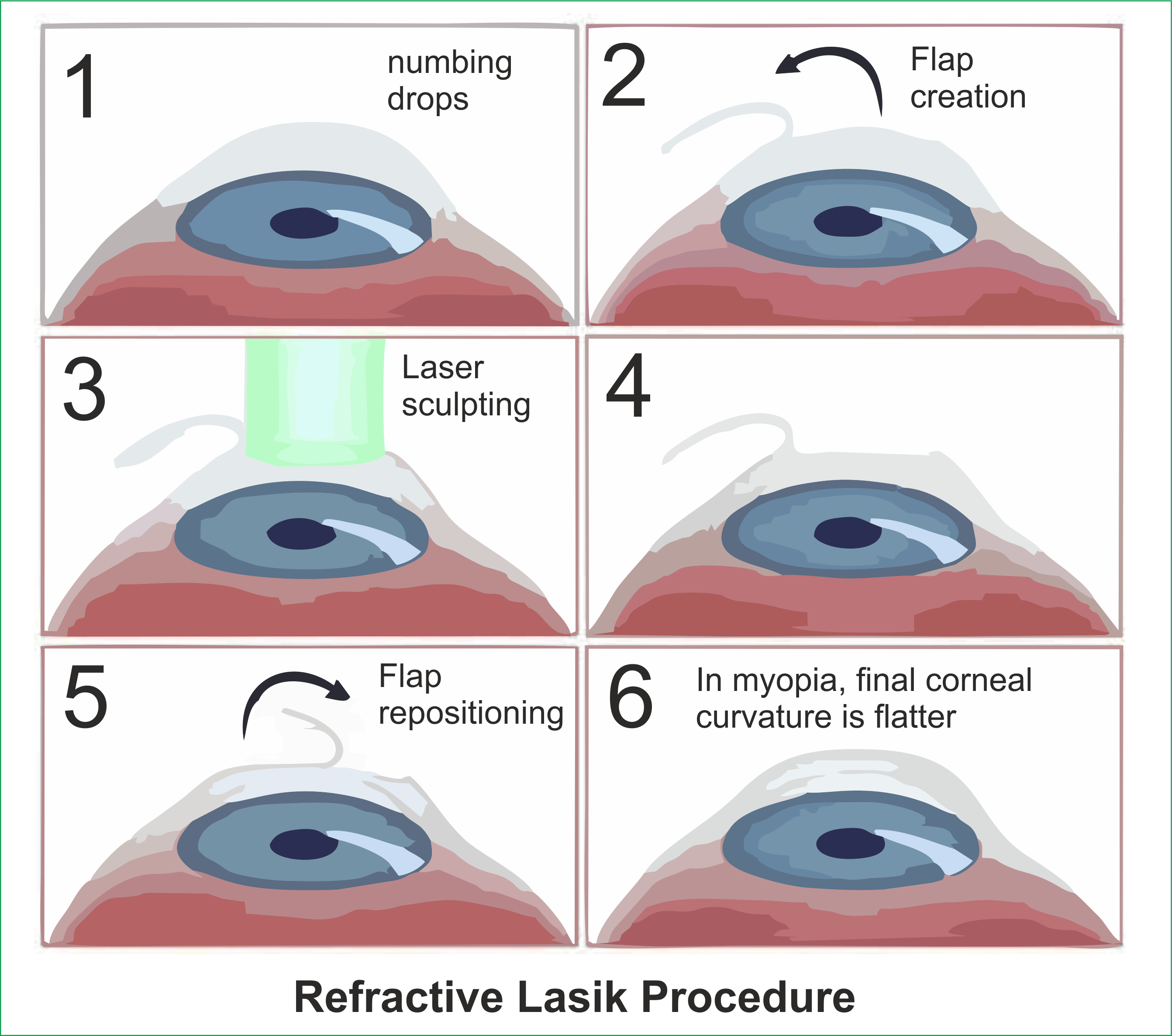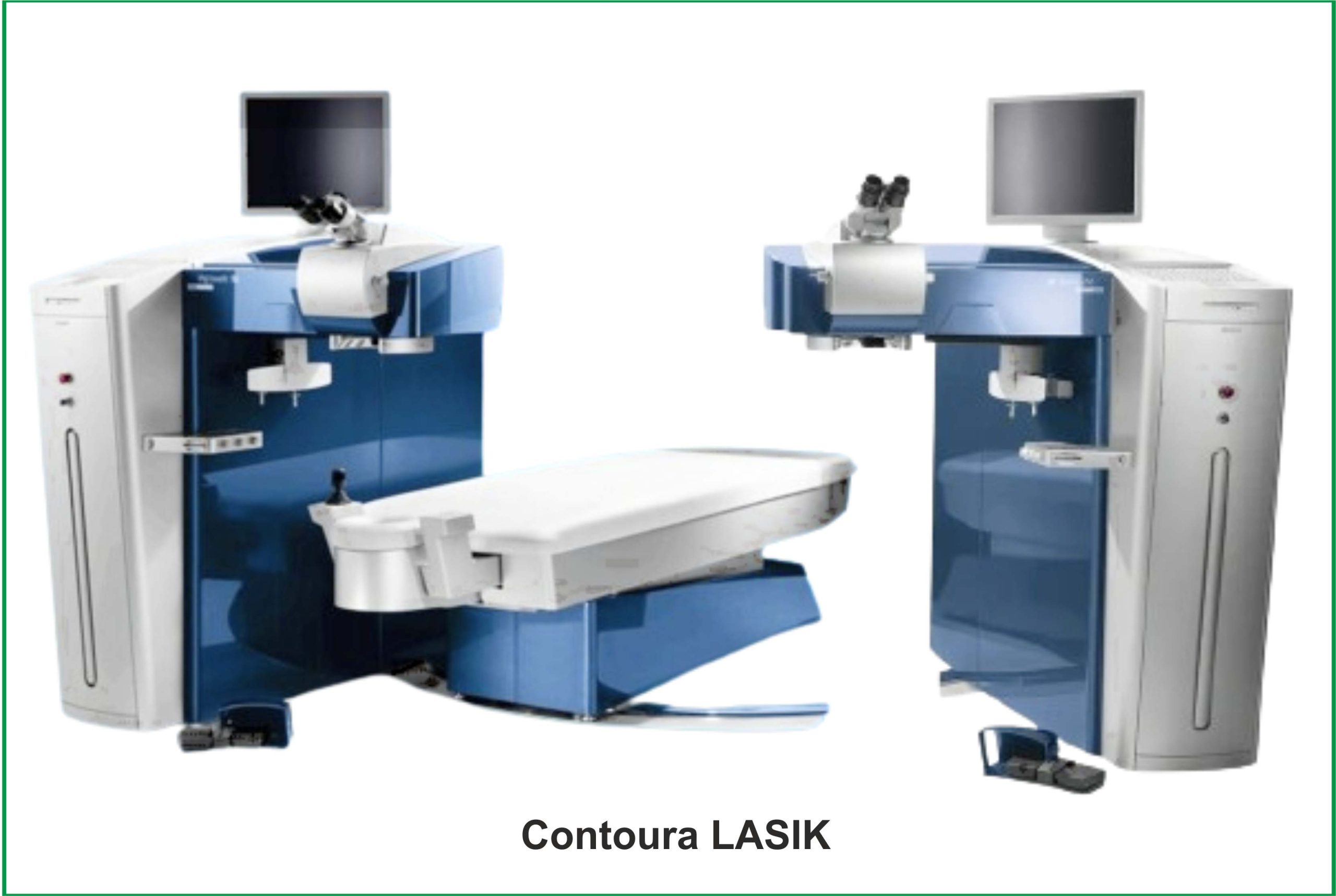vision for the future
Ramole Eye Hospital in Nashik is NABH Accredited Advanced Eye Care Centre in Nashik with all facilities like Advance PHACO Micro Surgery (MICS), Toric Lens Implant, New Refractive Tricofocal Implant, Contoura Lasik Vision Surgery, Advanced Surface Treatment, Phakic Implant (Phakic Lens/ICL), Keratoconus Treatment (C3R) etc. with Specialised & Customized Facilities available for All Age Groups including Pediatric to Senior Citizens. We provide all types of Mediclaim, ESIC, Facilities too.
LASIK SURGERY HELPS IN FOLLOWING EYE PROBLEMS

Nearsightedness (Myopia)
Myopia, commonly known as nearsightedness, is a refractive error of the eye where close objects are seen clearly, but distant objects appear blurry.
Farsightedness (Hyperopia)
Farsightedness, also known as hyperopia, is a common refractive error in the eye where distant objects can be seen more clearly than nearby ones.
Astigmatism       (Blurry Vision)
Astigmatism is a common refractive error in the eye that occurs when the cornea or lens has an irregular shape, causing blurred or distorted vision.
Refractive LASIK (Laser-Assisted In Situ Keratomileusis) surgery
Refractive LASIK (Laser-Assisted In Situ Keratomileusis) is a surgical procedure used to correct common vision problems, such as nearsightedness (myopia), farsightedness (hyperopia), and astigmatism. LASIK is a type of refractive surgery that aims to improve vision by reshaping the cornea, the clear front part of the eye, so that light entering the eye is properly focused onto the retina.
Here’s an overview of how the procedure works:

Corneal Flap Creation: The surgeon begins by creating a thin flap on the cornea. This can be done using a microkeratome (a mechanical device) or a femtosecond laser. The use of lasers has become more common due to their precision.
Corneal Reshaping: After the corneal flap is created, the surgeon uses an excimer laser to precisely remove a small amount of corneal tissue. The laser sculpts the cornea to change its shape, allowing light to be properly focused on the retina.
Flap Repositioning: Once the corneal reshaping is complete, the surgeon carefully repositions the corneal flap back into its original position. The natural suction of the cornea helps it adhere without the need for stitches in most cases.
Recovery Period: Refractive LASIK is known for its quick recovery time, and many people experience improved vision within a day or two. However, it’s essential to follow post-operative care instructions provided by the surgeon.
It’s important to note that while LASIK can be highly effective, it may not be suitable for everyone. A thorough eye examination and consultation with an ophthalmologist or refractive surgeon are necessary to determine if LASIK is a suitable option based on individual eye health and other factors.
As with any surgery, there are potential risks and side effects associated with LASIK, so individuals considering the procedure should have realistic expectations and thoroughly discuss the potential benefits and risks with their eye care professional at Ramole Eye Hospital, Schedule Your Appointment Today!
Contoura LASIK (Laser-Assisted In Situ Keratomileusis) surgery
Contoura LASIK is an advanced form of laser eye surgery that incorporates topographic-guided technology to create a highly personalized treatment plan. This procedure is designed to address not only common refractive errors like myopia, hyperopia, and astigmatism but also subtle irregularities in the corneal shape known as higher-order aberrations.
Here’s an overview of how the procedure works:

Topography Mapping: Before the surgery, the surgeon uses a specialized topography mapping system to create a detailed, three-dimensional map of the cornea’s surface. This map captures not only the standard refractive errors but also more nuanced irregularities in the corneal shape.
Treatment Planning: The topography data is then used to create a customized treatment plan for the laser. The goal is to reshape the cornea in a way that addresses both common refractive errors and the specific irregularities unique to each patient.
Corneal Reshaping with Excimer Laser: Similar to traditional LASIK, Contoura LASIK involves using an excimer laser to precisely remove corneal tissue based on the personalized treatment plan. The laser reshapes the cornea to improve its ability to focus light onto the retina, correcting vision problems.
Corneal Flap Creation (optional): In some cases, a corneal flap may be created to access the underlying tissue. The choice between a flap or no flap depends on the surgeon’s preference and the patient’s individual characteristics.
Flap Repositioning (if applicable): If a corneal flap is created, it is repositioned over the treated area. The natural adhesion of the corneal tissues helps hold the flap in place without the need for stitches.
Healing and Recovery: The personalized nature of Contoura LASIK aims to optimize visual outcomes and reduce the risk of postoperative visual disturbances. Patients typically experience a relatively quick recovery, with improved vision within a day or two.
Contoura LASIK is considered a more advanced and customized approach to laser vision correction, offering the potential for enhanced visual quality compared to traditional LASIK. As with any refractive surgery, a thorough examination and consultation with an eye care professional are crucial to determining if Contoura LASIK is the most suitable option for an individual’s specific eye health and vision correction needs.
Embark on a transformative journey to clearer vision with Contoura LASIK at Ramole Eye Hospital. Dr. Abhijeet Ramole (Expert Phaco & LASIK Surgeon in Nashik), renowned for precision and patient-centric care, invites you to explore the possibilities of Contoura LASIK. Schedule your consultation today for a vision correction experience like never before.
Frequently Asked Questions Related to LASIK Eye Treatment
Please have a closer look to the following commonly asked questions in order to know about LASIK Eye Treatment at Ramole Eye Hospital, Nashik. If have some other queries you may book an appointment.
In order to undergo LASIK, you should be 18 or older.
Corneal thickness: Patients with very thin corneas may be disqualified from LASIK surgery.
Overall ocular health: LASIK is not recommended for patients with conditions such as glaucoma, cataracts, or corneal diseases.
Stable vision: If you have had to change your contacts or glasses prescription in the last year, LASIK may not be the right option for you at this time.
During your LASIK consultation, we will carefully evaluate your medical history, overall health, and ocular health to determine whether LASIK is the right choice for you. If you do not meet the requirements for LASIK, Dr. Ramole can recommend alternative refractive surgeries.
The actual LASIK surgery can be completed in as little as 10 minutes per eye.
- Immediate results: Although it can take approximately six months to achieve your best vision, most LASIK patients see immediate improvements in their vision after the procedure.
- No contacts or glasses: Contacts can be difficult to maintain, and glasses get in the way of sports and other activities. LASIK can minimize or eliminate the need for contacts and glasses.
- Improved vision: Ninety percent of patients who undergo LASIK achieve 20/20 vision or better.
- Excellent safety: Surgical complications occur in less than one percent of LASIK patients.
- High satisfaction rate: Patients worldwide have reported a 95 percent satisfaction rate with their LASIK procedure.
LASIK can help you achieve dramatically improved vision without the hassle of contacts or glasses.
To determine whether you are a good candidate for LASIK, visit Dr. Abjijeet Ramole for a consultation.
You can request an appointment online or call us at (0253)23181226
